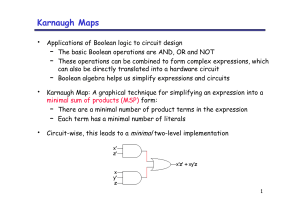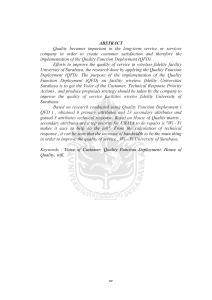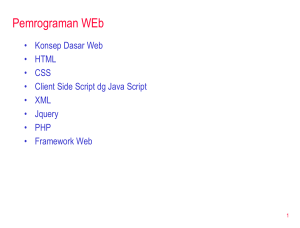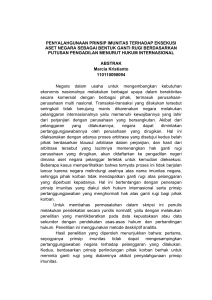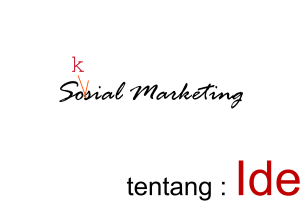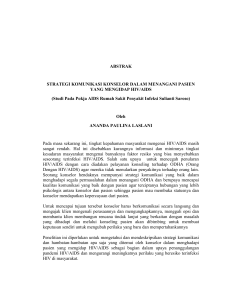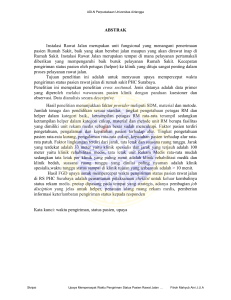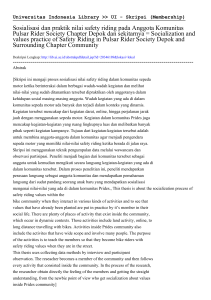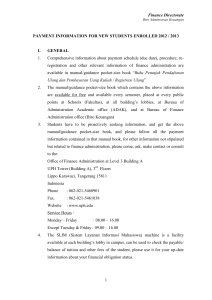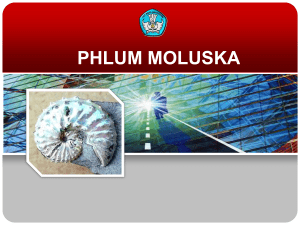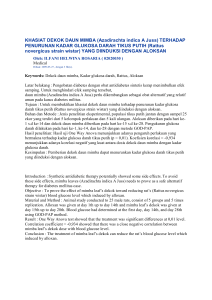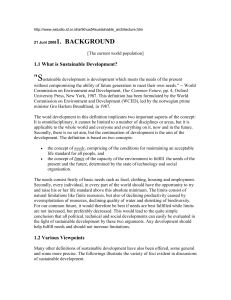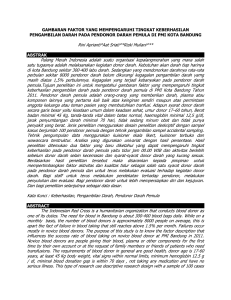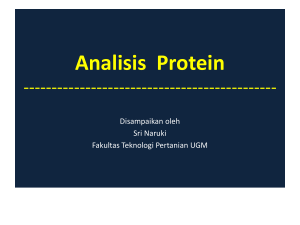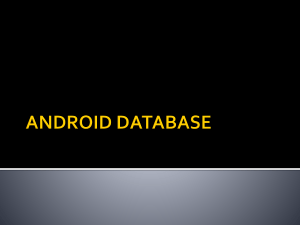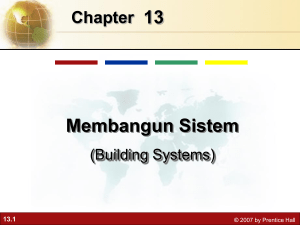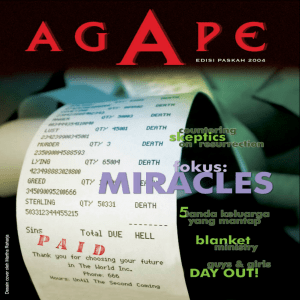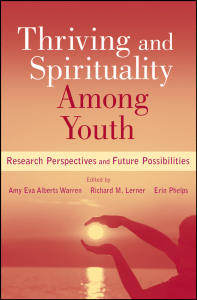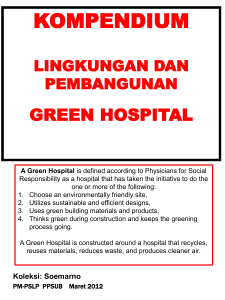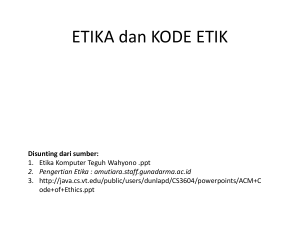pengukuran kualitas layanan
advertisement
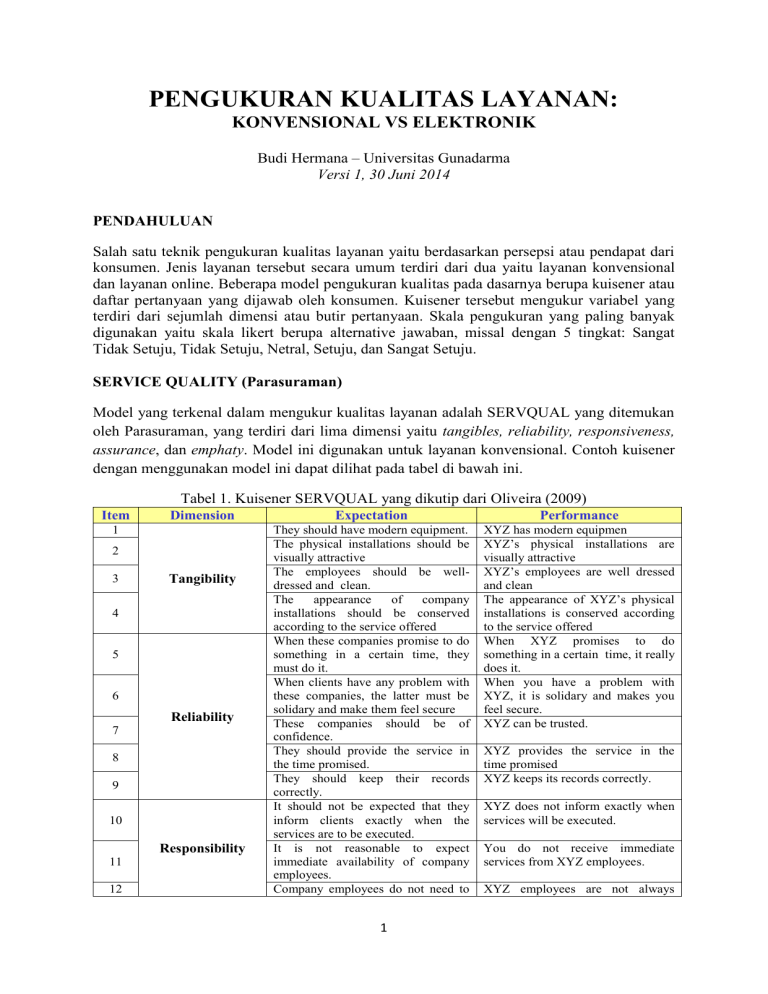
PENGUKURAN KUALITAS LAYANAN: KONVENSIONAL VS ELEKTRONIK Budi Hermana – Universitas Gunadarma Versi 1, 30 Juni 2014 PENDAHULUAN Salah satu teknik pengukuran kualitas layanan yaitu berdasarkan persepsi atau pendapat dari konsumen. Jenis layanan tersebut secara umum terdiri dari dua yaitu layanan konvensional dan layanan online. Beberapa model pengukuran kualitas pada dasarnya berupa kuisener atau daftar pertanyaan yang dijawab oleh konsumen. Kuisener tersebut mengukur variabel yang terdiri dari sejumlah dimensi atau butir pertanyaan. Skala pengukuran yang paling banyak digunakan yaitu skala likert berupa alternative jawaban, missal dengan 5 tingkat: Sangat Tidak Setuju, Tidak Setuju, Netral, Setuju, dan Sangat Setuju. SERVICE QUALITY (Parasuraman) Model yang terkenal dalam mengukur kualitas layanan adalah SERVQUAL yang ditemukan oleh Parasuraman, yang terdiri dari lima dimensi yaitu tangibles, reliability, responsiveness, assurance, dan emphaty. Model ini digunakan untuk layanan konvensional. Contoh kuisener dengan menggunakan model ini dapat dilihat pada tabel di bawah ini. Tabel 1. Kuisener SERVQUAL yang dikutip dari Oliveira (2009) Item Dimension 1 2 3 Tangibility 4 5 6 Reliability 7 8 9 10 Responsibility 11 12 Expectation Performance They should have modern equipment. The physical installations should be visually attractive The employees should be welldressed and clean. The appearance of company installations should be conserved according to the service offered When these companies promise to do something in a certain time, they must do it. When clients have any problem with these companies, the latter must be solidary and make them feel secure These companies should be of confidence. They should provide the service in the time promised. They should keep their records correctly. It should not be expected that they inform clients exactly when the services are to be executed. It is not reasonable to expect immediate availability of company employees. Company employees do not need to XYZ has modern equipmen XYZ’s physical installations are visually attractive XYZ’s employees are well dressed and clean The appearance of XYZ’s physical installations is conserved according to the service offered When XYZ promises to do something in a certain time, it really does it. When you have a problem with XYZ, it is solidary and makes you feel secure. XYZ can be trusted. 1 XYZ provides the service in the time promised XYZ keeps its records correctly. XYZ does not inform exactly when services will be executed. You do not receive immediate services from XYZ employees. XYZ employees are not always 13 14 15 16 Security 17 18 19 20 Empathy 21 22 be always available to help clients. It is normal for them to be too busy to readily respond to requests. Clients should be able to believe in the company’s employees. Clients should be able to feel safe in negotiating with company employees. The employees should be polite The employees should obtain adequate support from the company to perform their tasks correctly. It should not be expected for the companies to pay individual attention to the clients. It should not be expected for the employees to give personalized attention to the clients. It is absurd to expect the employees to know client needs. It is absurd to expect these companies to have the clients’ best interests as their objective It should not be expected for the business hours to be convenient for all clients available to help clients. XYZ employees are always too busy to respond to client requests. You can believe XYZ employees. You feel secure negotiating with XYZ employees. XYZ employees are polite. XYZ employees do not obtain adequate support from the company to perform their tasks correctly. XYZ does not pay individual attention to you XYZ employees personal attention do not XYZ employees do not know their needs. XYZ does not have your best interests as its objective. XYZ does not have convenient business hours for all clients. Sumber: O. J. D. Oliveira (2009). E-SERVICE QUALITY (Zeithaml, Parasurarnan, and Malhotra, 2002) Gambar 1 Conceptual Model for Understanding and Improving E-Service Quality (e-SQ) 2 give WEBQUAL 4.0 (Barnes and Vidgen, 2002) Tabel 2. Kuisener untuk Webqual 4 Usability Information Service Interaction 1. I find the site easy to learn to operate 2. My interaction with the site is clear and understandable 3. I find the site easy to navigate 4. I find the site easy to use 5. The site has an attractive appearance 6. The design is appropriate to the type of site 7. The site conveys a sense of competency 8. The site creates a positive experience for me 9. Provides accurate information 10. Provides believable information 11. Provides timely information 12. Provides relevant information 13. Provides easy to understand information 14. Provides information at the right level of detail 15. Presents the information in an appropriate format 16. Has a good reputation 17. It feels safe to complete transactions 18. My personal information feels secure 19. Creates a sense of personalization 20. Conveys a sense of community 21. Makes it easy to communicate with the organization 22. I feel confident that goods/services will be delivered as promised WEBQUALTM (Loiacono, Chen & Goodhue, 2002) Tabel 3. Kategori dan Dimensi pada kuisener untuk model WEBQUALTM 3 Tabel 4. Pertanyaan untuk model WEBQUALTM Informational Fit-to-Task Tailored Communication Trust 1. The information on the Web 4. The Web site allows me to 7. I feel safe in my transactions site is pretty much what I need interact with it to receive with the Web site to carry out my tasks tailored information 8. I trust the Web site to keep 2. The Web site adequately 5. The Web site has interactive my personal information safe meets my information needs features, which help me 9. I trust the Web site 3. The information on the Web accomplish my task administrators will not site is effective 6. I can interact with the Web misuse my personal site in order to get information information tailored to my specific needs Response Time Ease of Understanding Intuitiveness 10. When I use the Web site there 13. The display pages within 16. Learning to operate the is very little waiting time the Web site are easy to Web site is easy for me between my actions and the read 17. It would be easy for me to Web site.s response 14. The text on the Web site is become skillful at using the 11. The Web site loads quickly easy to read Web site 12. The Web site takes long to 15. The Web site labels are 18. I find the Web site easy to load easy to understand use Visual Appeal Innovativeness Emotional Appeal 19. The Web site is visually 22. The Web site is innovative 25. I feel happy when I use the pleasing 23. The Web site design is Web site 20. The Web site displays visually innovative 26. I feel cheerful when I use pleasing design 24. The Web site is creative the Web site 21. The Web site is visually 27. I feel sociable when I use appealing the Web site Consistent Image On-Line Completeness Relative Advantage 28. The Web site projects an 31. The Web site allows 34. It is easier to use the Web image consistent with the transactions on-line site to complete my company.s image 32. All my business with the business with the company 29. The Web site fits with my company can be completed than it is to telephone, fax, image of the company via the Web site or mail a representative 30. The Web site.s image 33. Most all business 35. The Web site is easier to matches that of the company processes can be use then calling an completed via the Web site organizational representative agent on the phone 36. The Web site is an alternative to calling customer service or sales Additional questions for "intent to reuse", grouped at the end of the questionnaire: 37. How likely or unlikely would you be to make a purchase from this Web site? (1 "Very unlikely to purchase" to 7 "Very likely to purchase") 38. How likely or unlikely would you be to revisit this Web site? (1 "Very unlikely to purchase" to 7 "Very likely to purchase") 4 IS SUCCESS MODEL (DeLone and McLean, 2003) Gambar 2. D&M IS Success Model (Initial) Gambar 3. Updated D&M IS Success Model (Revised) 5 Tabel 5. E-Commerce Success Metrics/Questions Systems quality Information quality Service quality • Adaptability • Completeness • Assurance • Availability • Ease of understanding • Empathy • Reliability • Personalization • Responsiveness • Response time • Relevance • Usability • Security Use User satisfaction Net benefits • Nature of use • Repeat purchases • Cost savings • Navigation patterns • Repeat visits • Expanded markets • Number of site visits • User surveys • Incremental additional sales • Number of transactions • Reduced search costs executed • Time savings References: E.T. Loiacono, D.Q. Chen & D.L. Goodhue. 2002. WEBQUALTM Revisited: Predicting The Intent to Reuse A Web Site. Eighth Americas Conference on Information Systems, 2002. O. J. D. Oliveira. 2009. Adaptation and application of the SERVQUAL scale in higher education. http://pomsmeetings.org/ConfProceedings/011/FullPapers/011-0072.pdf diakses pada tanggal 30 Juni 2014. S. J. Barnes and R. T. Vidgen. 2002. An Integrative Approach to The Assessment of ECommerce Quality. Journal of Electronic Commerce Research, VOL. 3, NO. 3, 2002. V. A. Zeithaml, A. Parasurarnan, and A. Malhotra. 2002. Service Quality Delivery Through Web Sites: A Critical Review of Extant Knowledge. Journal of the Academy of Marketing Science. Volume 30, No. 4, pages 362-375. W. H. DeLone and E. R. McLean. 2003. The DeLone and McLean Model of Information Systems Success: A Ten-Year Update. Journal of Management Information Systems / Spring 2003, Vol. 19, No. 4, pp. 9–30. 6
